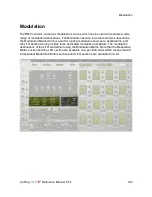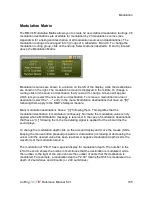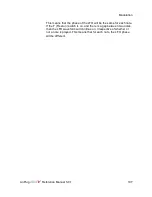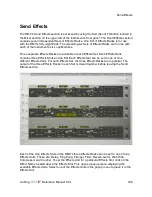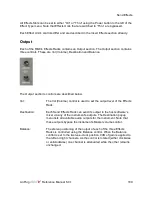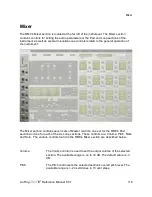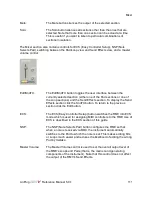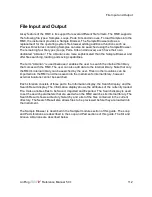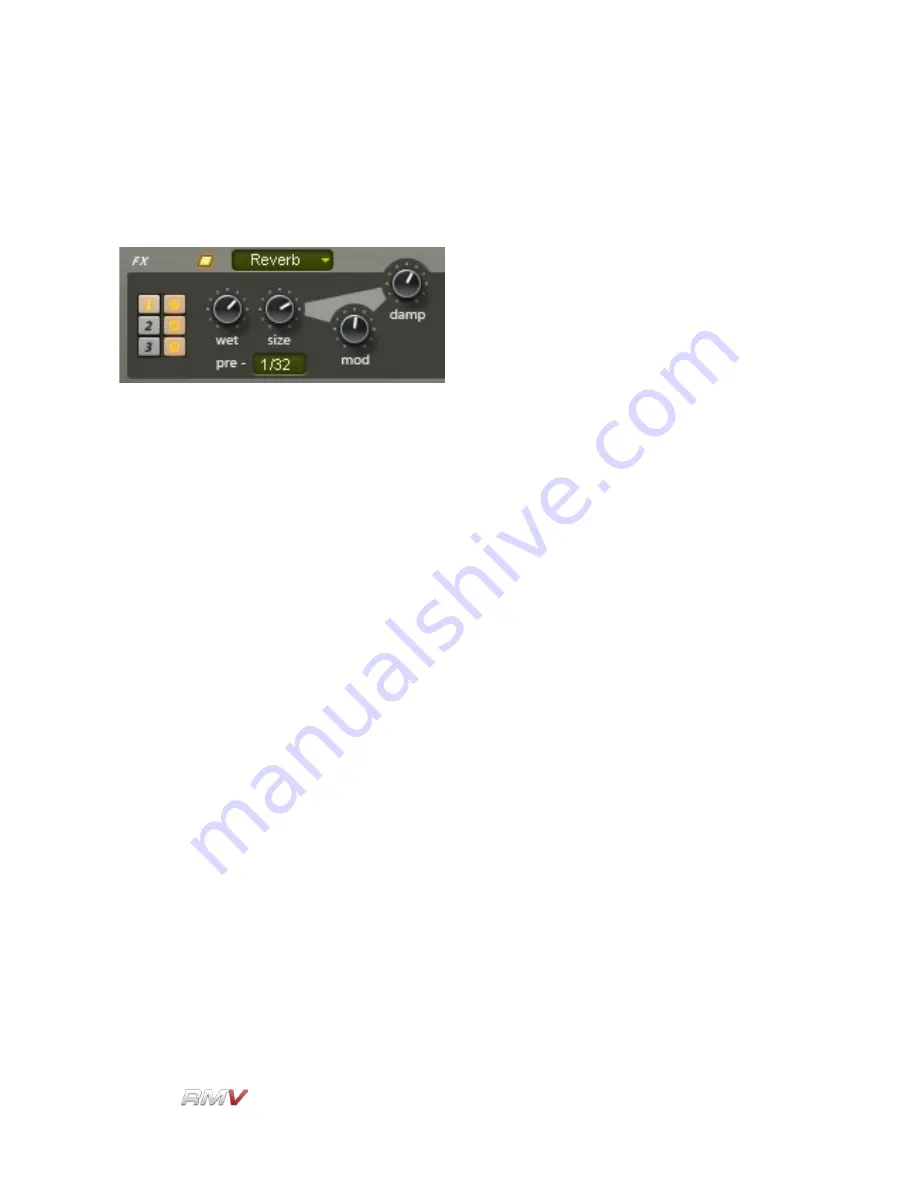
Signal Path
Reverb
The Reverb effect is used to add ambience to sounds, making them appear to be located
in an acoustic space.
The Reverb effect features controls for:
Wet:
The Wet control is used to set the balance between the processed
"wet" signal (that is, the “reverberated” signal) and the original
unprocessed "dry" signal.
Size:
The Size control is used to set the size of the simulated room. The
Roomsize varies from a small chamber up to a huge hall.
Pre:
The Pre (Predelay) control is used to delay the processed signal by a
given amount (in milliseconds) so as to achieve a more natural
reverberation effect. Normally, shorter predelay times are applied in
the case of smaller room sizes while longer predelay times are
applied in the case of larger room sizes. The Pre (Predelay) popup
menu can be used to sync the predelay time with the current tempo
(see Appendix B for the range of possible sync settings).
Mod:
The Mod (Modulation) control is used to set the rate at which the
Reverb's room size is modulated. The modulation effect is quite
subtle. Modulation can be turned off by turning the Mod
(“Modulation”) control fully anticlockwise.
Damp:
The simulated room's wall materials can be adjusted with the Damp
(Damping) control. This parameter ranges from practically loss-free
reflecting walls (0% damping) up to very absorbent walls (90%
damping). In practical terms, the amount of damping determines the
amount of higher frequencies that are contained in the processed
signal: The higher the Damp (Damping) setting, the more that higher
frequencies are removed from the processed signal.
LinPlug
Reference Manual 5.0.1
97






















